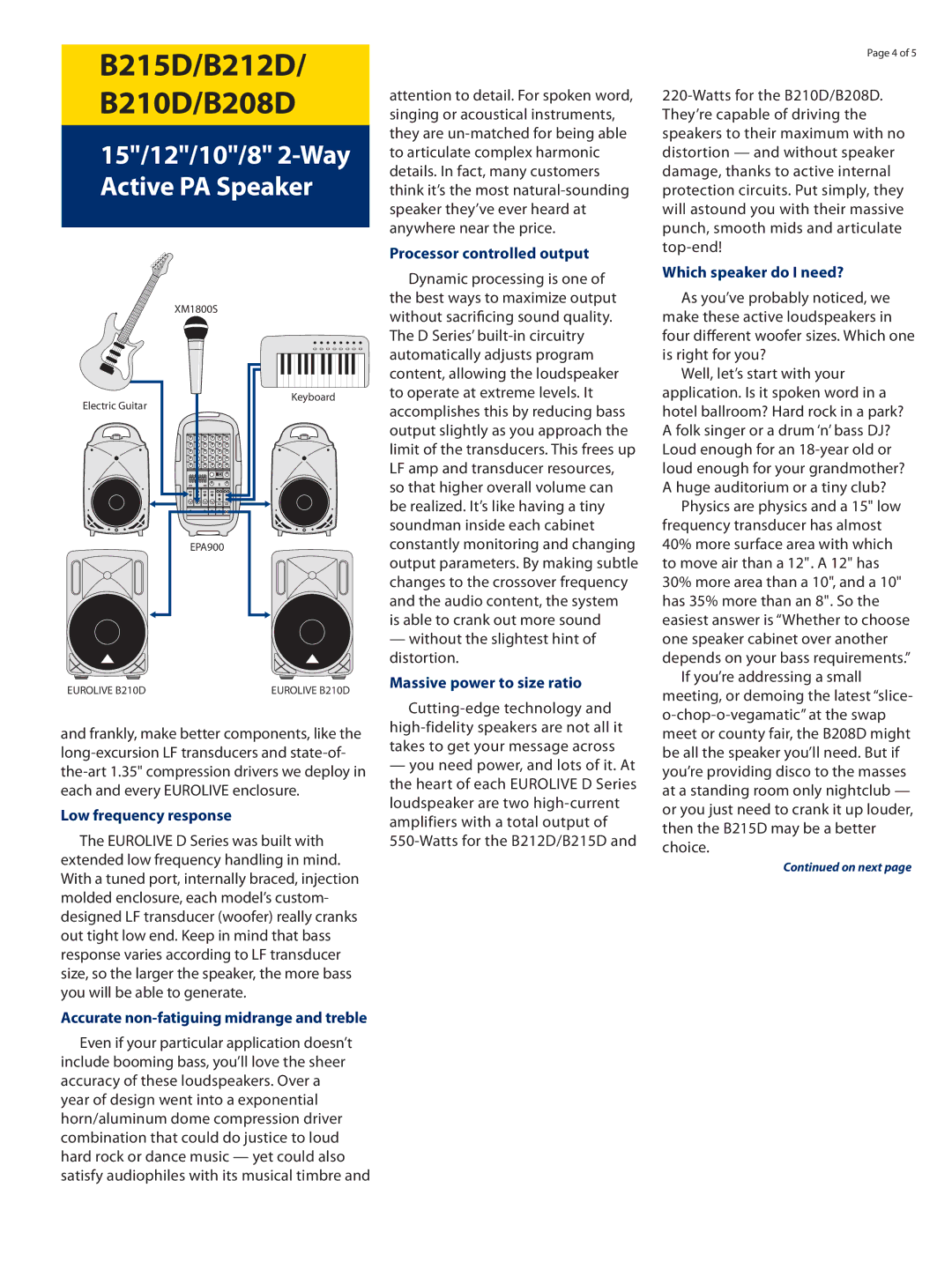B208D, B210D, B212D, B215D specifications
The Behringer B210D, B212D, B208D, and B215D are a series of active loudspeakers that reflect Behringer's commitment to delivering high-quality sound reinforcement solutions suitable for various applications, including live performances, DJ setups, and installations. Each model features a unique combination of power, portability, and advanced technology designed to meet the needs of both professional and amateur users.The B210D is a compact yet powerful 10-inch speaker that delivers a remarkable 2000 Watts of peak power. It features an integrated amplifier with advanced signal processing, ensuring clear sound reproduction across a wide frequency range. With a frequency response of 50 Hz to 20 kHz, this model is ideal for smaller venues or as a portable monitor speaker in larger setups.
Moving up in size, the B212D boasts a 12-inch woofer and 1.35-inch compression driver, providing an impressive 800 Watts of continuous power. This model excels in delivering punchy bass while maintaining clarity in vocals and higher frequencies. Its lightweight design, coupled with a durable enclosure, makes it a popular choice for mobile DJs and traveling musicians.
The B208D is designed for users who prioritize portability without sacrificing performance. Featuring an 8-inch woofer, this active speaker offers an impressive 200 Watts of continuous power. Its compact footprint makes it perfect for smaller gigs or as a monitor in larger settings. The integrated mixer allows for easy connection of various audio sources, making it a versatile tool in any sound setup.
Lastly, the B215D features a larger 15-inch woofer and delivers a powerful 1000 Watts of continuous power. Its enhanced low-frequency response makes it ideal for bass-heavy music genres. The built-in wireless streaming capabilities offer additional flexibility for modern users, allowing connections to mobile devices without the need for cumbersome cables.
All four models utilize Behringer’s innovative Class D amplifier technology, which not only increases efficiency but also reduces weight. Additionally, the speaker cabinets are constructed from durable polypropylene, offering resilience and portability for both indoor and outdoor use.
In summary, the Behringer B210D, B212D, B208D, and B215D deliver a blend of power, portability, and advanced technology. Each model caters to different needs and settings, ensuring there is a Behringer active speaker for every application, whether it be concerts, parties, or installation in a venue. With their robust features and superior sound quality, these speakers are well-equipped to handle various audio demands while providing exceptional value.

